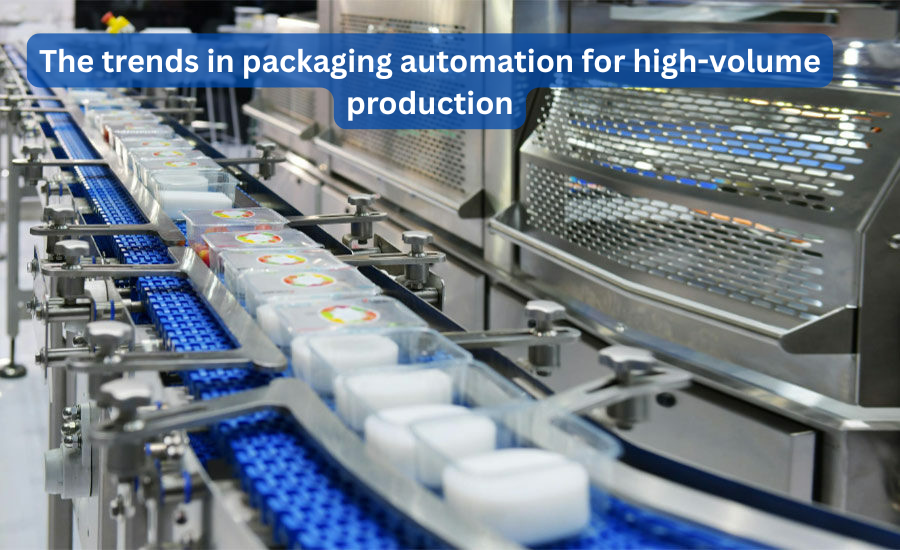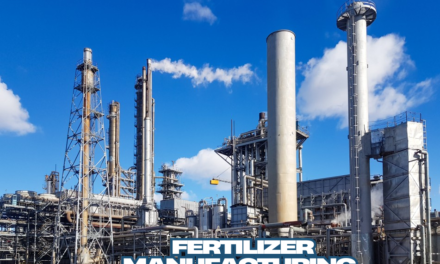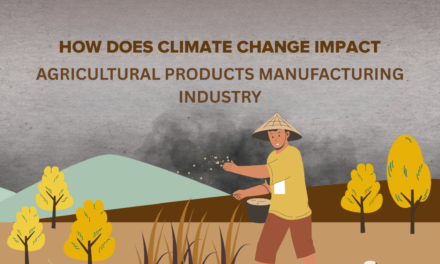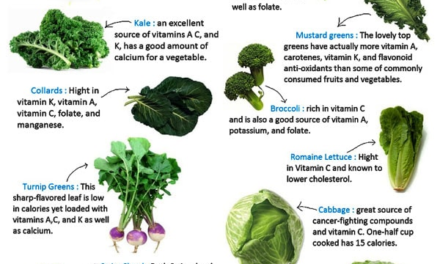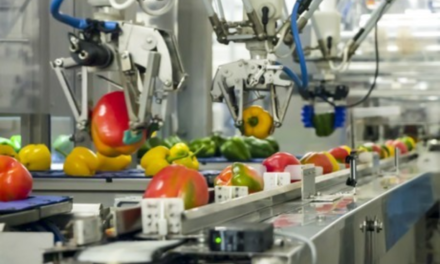Packaging automation for high-volume production is evolving rapidly, driven by the need for efficiency, cost reduction, and adaptability. Here are the key trends shaping the industry:
1. Smart and Connected Packaging Systems
- Trend: Integration of IoT-enabled machinery to provide real-time monitoring and control of packaging lines.
- Features:
- Sensors and data analytics to track machine performance, detect issues, and optimize processes.
- Remote monitoring and predictive maintenance using cloud platforms.
- Benefits: Increased uptime, reduced waste, and better production line efficiency.
- Example: IoT-enabled wrappers and cartons that adjust speeds based on production flow.
2. Collaborative Robotics (Cobots)
- Trend: Deployment of cobots to work alongside human operators for tasks like palletizing, sorting, and labeling.
- Features:
- Lightweight, flexible robots that can be easily programmed for different tasks.
- Enhanced safety systems to allow close human-robot interaction.
- Benefits: Reduced labor costs, improved productivity, and easy scalability for changing production demands.
- Example: Cobots handling repetitive tasks like placing products into trays or applying labels.
3. High-Speed Automation
- Trend: Increased focus on high-speed machinery for faster throughput in high-volume settings.
- Features:
- Advanced servo motors and drive systems for rapid and precise movements.
- Integrated quality control mechanisms to minimize downtime for rework.
- Benefits: Greater output with consistent quality and minimal errors.
- Example: Cartoning machines capable of packaging thousands of units per hour for food or pharmaceuticals.
4. Customizable and Modular Equipment
- Trend: Packaging lines designed for flexibility and quick reconfiguration to accommodate diverse products.
- Features:
- Modular components that can be swapped to handle different package types or sizes.
- Systems capable of both rigid and flexible packaging formats.
- Benefits: Reduced downtime during product changeovers and improved adaptability for market demands.
- Example: Machines that seamlessly switch between pouch, bottle, and carton packaging.
5. Sustainability Integration
- Trend: Packaging automation systems designed to handle eco-friendly materials and reduce waste.
- Features:
- Machines optimized for lightweight, biodegradable, or recyclable packaging materials.
- Systems that minimize material usage through precise cutting and sealing.
- Benefits: Lower environmental impact and alignment with consumer demand for sustainable products.
- Example: Automated systems that efficiently handle paper-based or compostable packaging.
6. Vision Systems and AI Integration
- Trend: Use of advanced vision systems and AI for quality control and decision-making.
- Features:
- Cameras and sensors to inspect the packaging for defects like misaligned labels, improper seals, or incorrect product placement.
- AI algorithms for real-time adjustments to improve accuracy and reduce rework.
- Benefits: Enhanced quality assurance and reduced waste due to early detection of defects.
- Example: Vision systems ensure the perfect alignment of graphics on printed packaging.
7. Automated Palletizing and Logistics
- Trend: Fully automated systems for end-of-line tasks like palletizing, wrapping, and labeling.
- Features:
- Robotic palletizers capable of creating optimized load patterns.
- Automated guided vehicles (AGVs) or autonomous mobile robots (AMRs) for transporting pallets.
- Benefits: Streamlined logistics, reduced labor dependency, and faster order fulfillment.
- Example: Integrated systems where robots stack products and AGVs transport them to warehouses.
8. Integration of Augmented Reality (AR)
- Trend: Use of AR in machine setup, training, and troubleshooting.
- Features:
- AR tools that overlay instructions on real-world machinery for guidance.
- Remote assistance using AR glasses for on-the-spot problem-solving.
- Benefits: Faster onboarding, reduced training time, and quicker issue resolution.
- Example: AR-guided tutorials for reconfiguring packaging machines.
9. Data-Driven Decision Making
- Trend: Leveraging data analytics to improve packaging operations and supply chain efficiency.
- Features:
- Real-time dashboards displaying key performance indicators (KPIs) like throughput, waste levels, and downtime.
- AI-driven recommendations for optimizing machine settings and workflows.
- Benefits: Proactive decision-making and continuous process improvement.
- Example: AI-powered software identifying bottlenecks and suggesting workflow adjustments.
10. Multi-Functionality and Integration
- Trend: Combining multiple packaging steps into a single automated line.
- Features:
- Machines that perform filling, capping, labeling, and sealing in one integrated system.
- Seamless communication between upstream and downstream processes.
- Benefits: Reduced footprint, faster production cycles, and lower operational costs.
- Example: Beverage production lines integrating filling, sealing, and labeling for ready-to-ship products.
11. Advanced Material Handling Systems
- Trend: Enhanced conveyors and robotic arms for precise and efficient movement of products.
- Features:
- Adaptive conveyors that adjust speeds and paths based on product flow.
- Gentle handling systems for fragile or irregularly shaped items.
- Benefits: Minimized product damage and smoother workflows.
- Example: Robotic arms equipped with soft grippers for handling delicate bakery items.
12. Digital Twins for Simulation and Optimization
- Trend: Use of digital twins to simulate packaging lines and optimize processes before implementation.
- Features:
- Virtual models of machinery and workflows for testing configurations.
- Real-time feedback loops to evaluate performance and identify improvements.
- Benefits: Reduced setup costs, faster deployment, and higher operational efficiency.
- Example: Simulating the effect of adding new SKUs to a production line using digital twin technology.
13. Compliance and Traceability Systems
- Trend: Automation to ensure compliance with labeling and traceability regulations.
- Features:
- Serialization and barcode printing are integrated into packaging lines.
- Systems for tracking and tracing products through the supply chain.
- Benefits: Improved regulatory compliance and enhanced consumer trust.
- Example: Pharmaceutical packaging lines with built-in track-and-trace capabilities.
14. Focus on User-Friendly Interfaces
- Trend: Simplified interfaces for operators to manage and troubleshoot packaging systems.
- Features:
- Touchscreen controls with intuitive dashboards.
- Multilingual support for global operations.
- Benefits: Reduces operator training time and minimizes human errors.
- Example: Machines with pre-programmed settings for different packaging configurations.
15. Cost and Waste Reduction
- Trend: Machines designed to optimize material usage and reduce operational costs.
- Features:
- Precision dosing and cutting to avoid material waste.
- Energy-efficient motors and systems to lower energy consumption.
- Benefits: Improved sustainability and cost savings.
- Example: Form-fill-seal machines that minimize film usage in flexible packaging.
Conclusion
The trends in packaging automation for high-volume production emphasize speed, sustainability, adaptability, and intelligence. By adopting these advancements, manufacturers can enhance efficiency, reduce costs, and meet the dynamic demands of global markets while maintaining product quality and compliance.
Hashtags
#DigitalTransformation #PackagingEfficiency #SmartFactory #AutomatedPackaging #PackagingDesign #IndustryInsights #PackagingTechnology #EfficientManufacturing #SustainablePackaging #SmartPackaging #InnovativeSolutions #PackagingIndustry #AutomationRevolution #HighSpeedProduction #PackagingSolutions #SmartPackagingDesign #EcoFriendlyPackaging #AdvancedPackaging #PackagingMachinery #SmartPackagingSystems

